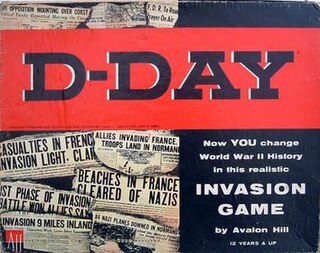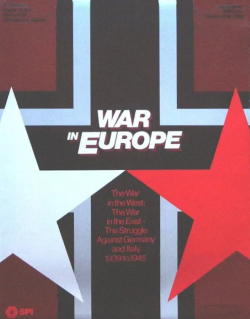
Paul Emil von Lettow-Vorbeck, also called the Lion of Africa, was a general in the Imperial German Army and the commander of its forces in the German East Africa campaign. For four years, with a force of about 14,000, he held in check a much larger force of 300,000 British, Indian, Belgian, and Portuguese troops.

The Battle of Tanga, sometimes also known as the Battle of the Bees, was the unsuccessful attack by the British Indian Expeditionary Force "B" under Major General A. E. Aitken to capture German East Africa during the First World War in concert with the invasion Force "C" near Longido on the slopes of Mount Kilimanjaro. It was the first major event of the war in Eastern Africa and saw the British defeated by a significantly smaller force of German Askaris and colonial volunteers under Lieutenant Colonel Paul von Lettow-Vorbeck. It was the beginning of the East African Campaign of World War I, and is considered one of greatest victories of the Schutztruppe in Africa. The British retreat enabled the Schutztruppe to salvage modern equipment, medical supplies, tents, blankets, food and a number of Maxim machine guns which allowed them to successfully resist the allies for the rest of the war.

The Longest Day is a World War II board wargame published by Avalon Hill in 1980 that simulates the Allied D-Day invasion of June 1944 and the subsequent Normandy campaign.

The Battle of Jassin was a World War I battle that took place on 18– 19 January 1915 at Jassin on the German East African side of the border with British East Africa between a German Schutztruppe force and British and Indian troops. Jassin had been occupied by the British in order to secure the border between British East Africa and German territory, but was weakly defended by a garrison of four companies of Indian troops, commanded by Colonel Raghbir Singh and numbering a little over 300 men. Colonel Raghbir Singh was killed during the battle.

D-Day is a board wargame published by Avalon Hill in 1961 that simulates the six months of the European Campaign of World War II from the Normandy Invasion to the crossing of the Rhine. It was the first wargame to feature the now ubiquitous hex grid map and cardboard counters, and was revised and re-released in 1962, 1965, 1971, 1977 and 1991.

War in Europe is a grand strategic "monster" board wargame published by Simulations Publications Inc. (SPI) in 1976 that attempts to simulate the entirety of World War II's European theater of operations from 1939 to 1945. One of the largest wargames ever produced, War in Europe features 4000 counters, four rulebooks, and nine maps that when placed together cover an area of 38.5 ft2. The game is nominally a three-player game, but each side can be represented by teams of players. SPI estimated the full game would take at least 180 hours.

The East African campaign in World War I was a series of battles and guerrilla actions, which started in German East Africa (GEA) and spread to portions of Mozambique, Rhodesia, British East Africa, the Uganda, and the Belgian Congo. The campaign all but ended in German East Africa in November 1917 when the Germans entered Mozambique and continued the campaign living off Portuguese supplies.

Ruga-Ruga were irregular troops in Eastern Africa, often deployed by western colonial forces. They often served as mercenaries or local auxiliaries alongside the regular Askari, professional soldiers who were often hired in other regions of Africa. While the latter were trained by officers of the European colonial powers in Africa, the Ruga-Ruga were mostly hired from tribal warriors during times of conflict.

The Battle of Lioma was fought between the German Empire and British Empire during the East African Campaign of World War I. Having successfully evaded the Allies since late 1917, the German Schutztruppe under Paul von Lettow-Vorbeck waged a guerilla campaign in Portuguese East Africa, attacking and raiding settlements as well as forts in the search of supplies while inflicting as much damage as possible on the Allies. All the while, the Schutztruppe was chased by the British King's African Rifles, which finally cornered the Germans at the village of Lioma on 30–31 August 1918. Led by George Giffard, the British forces almost managed to encircle and destroy the Schutztruppe, but in the end the Germans broke out and successfully retreated. Although greatly weakened by the fighting at Lioma, the Schutztruppe was thus able to remain active until the end of the war.
Major Georg Kraut was an officer of the Imperial German Army during the First World War, a veteran of the Schutztruppe, and the second-in-command of Paul von Lettow-Vorbeck. He was active in German East Africa. He participated in multiple battles, including the Battle of Tanga, the Battle of Salaita Hill, and the Battle of Iringa. Post-war, he joined the Freikorps with Lettow-Vorbeck and helped suppress the Spartacist Revolt.

Narvik: The Campaign in Norway, 1940 is a board wargame published by Game Designers' Workshop (GDW) in 1974 that simulates Operation Weserübung, the German invasion of Denmark and Norway during World War II. The game was one of the first in the Europa series of twenty interlocking games envisioned by GDW that would cover the entire European and North African theatres from the start to the end of World War II, using identical map scales and similar rules.

El Alamein: Battles in North Africa, 1942 is a board wargame published by Simulations Publications Inc. (SPI) in 1973 that simulates the final four months of the North African campaign during World War II.

Jerusalem! Tactical Game of the 1948 War is a board wargame published by Simulations Design Corporation (SDC) in 1975 that simulates the 1948 Arab–Israeli War.

Kasserine Pass, in some editions subtitled "The Baptism of Fire", is a board wargame published by Conflict Games in 1972 that simulates the Battle of Kasserine Pass during the North African Campaign of 1942, when inexperienced American forces were attacked by the battle-hardened Afrika Korps under the command of Erwin Rommel. The game was the first created by noted game designer John Hill.

Overlord, subtitled "The Normandy Invasion", is a board wargame published by Conflict Games in 1973 that simulates the Normandy landings and the subsequent attempt by the Germans to prevent the Allies from breaking out of Normandy during World War II.

The Moscow Campaign, subtitled "Strike and Counterstrike Russia", is a board wargame published by Simulations Publications Inc. (SPI) in 1972 that simulates combat near Moscow during World War II.

1918, subtitled "Operation Michel: March 21–30, Germany's Last Chance in the West", is a board wargame published by Simulations Publications Inc. (SPI) in 1970 that simulates Operation Michael, the final German offensive on the Western Front in which they tried to win the war or at least force peace talks before American soldiers started to arrive on the Western Front in force. The game was well received by critics, but did not sell well.

Anzio Beachhead is a board wargame published by Simulations Publications Inc. (SPI) in 1969 that simulates the Battle of Anzio during World War II, when American amphibious forces landed at Anzio, seeking to open a second front in Italy. The game was designed as a supplement to the larger and more complex game Anzio that had been published the previous year by industry rival Avalon Hill.

Arnhem, subtitled "Operation Market-Garden, September 1944" and also published as A Bridge Too Far: Arnhem, is a board wargame published by Simulations Publications Inc. (SPI) in 1976 that simulates Operation Market Garden during World War II, when Allied forces attempted to create a salient in the Netherlands, using paratroopers to take strategic bridges over the Rhine. Arnhem was originally published in the WestWall "quadrigame", but was also packaged for sale as an individual game.

Bay of Pigs is a board wargame designed and published by Jim Bumpas in 1976 that simulates the CIA-backed invasion of Cuba in 1961 that planned to overthrow the regime of Fidel Castro.




















